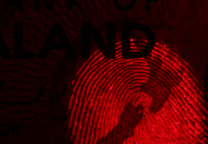Product #
Description
#
Add
B-83900
PECA Multiband, jar of 20 gram
Required equipment
Fuming of PECA cyanoacrylates requires a fuming cabinet fitted with a heating plate capable of reaching a temperature of 230° C/446° F. The relative humidity in the chamber should reach 80%. A scale is required to weigh the PECA. To view the fluorescence of PECA Fluor Extra a high intensity long wave UV lamp is needed. To make full use of the capabilities of the Multiband version a forensic alternate light source is necessary.
General instructions for use
Set up the cabinet so that the heating plate reaches a temperature of 230° C/446° F during the fuming cycle. The relative humidity should be set to 80%. In case a cabinet is used that is capable of running in an automated mode, set the fuming cycle between 20 and 25 minutes.
In an aluminium fuming dish, weigh the required quantity of PECA. Spread PECA over the surface of the dish so that it is evenly divided in a thin layer.
A guideline for use is 1.6 gram of PECA per one cubic meter (approximately 35 cubic feet) of volume of the fuming chamber. For fuming cabinets manufactured by Foster & Freeman this would be:
- MVC1000 = 0.2 gram
- MVC3000 = 1 gram
- MVC5000 = 1.9 gram
Place the exhibits in the fuming cabinet and the aluminium dish on the heating plate.
Start the fuming process. For automated processes the fuming cycle is already set to 20-25 minutes in the first step of the instructions, for manual processes allow 20 to 25 minutes for heating of PECA.
At the end of fuming process, once the air inside the cabinet is cleansed, the exhibits can be taken out of the cabinet. The exhibits are now ready for further examination.
Examining the exhibits and photographing the marks
PECA Regular
Similar to normal cyanoacrylate in a fluid form, marks are developed by the polymerization of the cyanoacrylate on the mark. This results in white coloured marks. The developed marks can be stained using staining solutions like Ardrox and Basic Yellow 40.
PECA Fluor Extra (one-step process)
To the naked eye PECA Fluor Extra develops the marks in a similar manner as PECA Regular but excitation with long wave UV light (365 nm) causes the developed marks to fluoresce. Wear goggles with an UV blocking filter to protect your eyes and to improve contrast. Photography of the fluorescent marks is done through a UV blocking filter.
PECA Multiband (one-step process)
Finger marks developed with PECA Multiband visually develop in the same way as PECA Regular and PECA Fluor Extra. PECA Multiband, however, will fluoresce once excited with light between 365 and approximately 555 nm. To examine and photograph the fluorescence use filter goggles and a camera filter suitable to the excitation bandwidth of the light.
PECA and Gellifters
Marks developed with all three versions of PECA can easily be lifted with a black Gellifter. Lifting cyanoacrylate developed marks to a black Gellifter completely separates these marks from the background. The marks on the black surface of the Gellifter can thus be photographed without the disturbance of the background. Marks developed on curved surfaces are photographed more easily as these are transferred from a 3D to a flat 2D surface.
Fuming of PECA cyanoacrylates requires a fuming cabinet fitted with a heating plate capable of reaching a temperature of 230° C/446° F. The relative humidity in the chamber should reach 80%. A scale is required to weigh the PECA. To view the fluorescence of PECA Fluor Extra a high intensity long wave UV lamp is needed. To make full use of the capabilities of the Multiband version a forensic alternate light source is necessary.
General instructions for use
Set up the cabinet so that the heating plate reaches a temperature of 230° C/446° F during the fuming cycle. The relative humidity should be set to 80%. In case a cabinet is used that is capable of running in an automated mode, set the fuming cycle between 20 and 25 minutes.
In an aluminium fuming dish, weigh the required quantity of PECA. Spread PECA over the surface of the dish so that it is evenly divided in a thin layer.
A guideline for use is 1.6 gram of PECA per one cubic meter (approximately 35 cubic feet) of volume of the fuming chamber. For fuming cabinets manufactured by Foster & Freeman this would be:
- MVC1000 = 0.2 gram
- MVC3000 = 1 gram
- MVC5000 = 1.9 gram
Place the exhibits in the fuming cabinet and the aluminium dish on the heating plate.
Start the fuming process. For automated processes the fuming cycle is already set to 20-25 minutes in the first step of the instructions, for manual processes allow 20 to 25 minutes for heating of PECA.
At the end of fuming process, once the air inside the cabinet is cleansed, the exhibits can be taken out of the cabinet. The exhibits are now ready for further examination.
Examining the exhibits and photographing the marks
PECA Regular
Similar to normal cyanoacrylate in a fluid form, marks are developed by the polymerization of the cyanoacrylate on the mark. This results in white coloured marks. The developed marks can be stained using staining solutions like Ardrox and Basic Yellow 40.
PECA Fluor Extra (one-step process)
To the naked eye PECA Fluor Extra develops the marks in a similar manner as PECA Regular but excitation with long wave UV light (365 nm) causes the developed marks to fluoresce. Wear goggles with an UV blocking filter to protect your eyes and to improve contrast. Photography of the fluorescent marks is done through a UV blocking filter.
PECA Multiband (one-step process)
Finger marks developed with PECA Multiband visually develop in the same way as PECA Regular and PECA Fluor Extra. PECA Multiband, however, will fluoresce once excited with light between 365 and approximately 555 nm. To examine and photograph the fluorescence use filter goggles and a camera filter suitable to the excitation bandwidth of the light.
PECA and Gellifters
Marks developed with all three versions of PECA can easily be lifted with a black Gellifter. Lifting cyanoacrylate developed marks to a black Gellifter completely separates these marks from the background. The marks on the black surface of the Gellifter can thus be photographed without the disturbance of the background. Marks developed on curved surfaces are photographed more easily as these are transferred from a 3D to a flat 2D surface.










